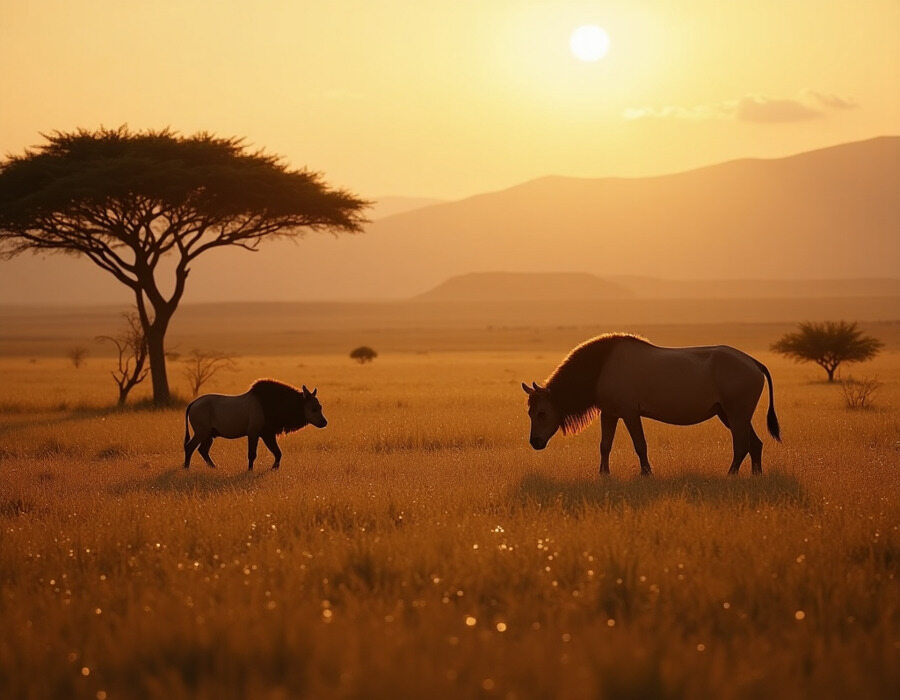Mount Kilimanjaro's Unique Ecosystem Reveals Surprising New Amphibian Species - Travel And Tour World
Tuesday, July 1, 2025

In a first-of-its-kind finding, scientists have found Africa’s highest-living frog species on Mount Kilimanjaro at an altitude of 4000 meters. Altezza Travel discovered this in an expedition that took place in June 2024 and has gone down in history as a major breakthrough in understanding biodiversity in this region. So far, it was believed that no frog species could live that high, with 3,000 meters being regarded as the standard ceiling for amphibians in Africa. The finding has since sparked ongoing research to identify if this frog is of a new species or if it’s just a familiar species that has been found to live at an unprecedented height.
The initial reports of the discovery were filed with the Tanzania Wildlife Research Institute (TAWIRI), prompting an official expedition to further investigate. The expedition was supported by Altezza Travel, which fully funded the research and provided logistical support. The team, consisting of amphibian experts and mountaineers, ventured into the high-altitude regions of Mount Kilimanjaro, focusing on the river systems found between 3,500 and 4,000 meters (11,500–13,100 feet). Their primary objective was to confirm the presence of frogs and collect DNA samples for further analysis.
Professor Alan Channing, an amphibian expert from North-West University in South Africa, confirmed that no frog species had been previously documented living at such high elevations on the African continent. The discovery was initially met with excitement and curiosity, as it opened new possibilities for understanding how amphibians can adapt to extreme environments.
Between February 20 and 25, 2025, the research team returned to the mountain to explore the river systems and continue their investigations. The team was able to locate the frogs at altitudes higher than previously believed possible. They collected DNA samples that were subsequently sent to laboratories in South Africa for analysis. The results confirmed that the frogs belong to the species Amietia wittei, a frog typically found at lower elevations but now confirmed to inhabit altitudes much higher than originally thought.
Altezza Travel, a prominent operator of Kilimanjaro expeditions, played a crucial role in organizing and funding the research. The company is well-known for its commitment to sustainable tourism and environmental conservation, making this scientific endeavor part of its broader efforts to protect Tanzania’s natural heritage. Altezza Travel’s contributions were not limited to financial support; they also provided logistical assistance, including the provision of guides, porters, food supplies, and oxygen tanks, essential for the high-altitude environment of Mount Kilimanjaro.
In addition, Altezza Travel covered the costs of DNA sampling and laboratory testing, which were critical to confirming the identity of the frogs and providing valuable insights into their adaptation to high-altitude conditions. By funding the expedition and supporting the researchers, Altezza Travel has reinforced its commitment to combining tourism with conservation and scientific research.
While the discovery of these high-altitude frogs is a remarkable scientific achievement, it also raises concerns about the future survival of the species. Scientists have identified several threats to the frogs’ habitat that could have a detrimental effect on their population. One of the primary concerns is water contamination. It is well-documented that the use of dishwashing chemicals by Kilimanjaro porters may pollute the rivers where the frogs live. Such pollution poses a significant risk to amphibians, which are particularly vulnerable to waterborne contaminants.
In addition to contamination, climate change represents another serious threat. The changing climate could reduce the availability of water sources, making it increasingly difficult for amphibians to thrive in their high-altitude habitats. The loss of suitable habitats due to shifts in rainfall patterns could lead to a decline in frog populations, further exacerbating the challenges they face.
Another possible threat comes from predation by birds, which are common in the area and could pose a risk to the frogs, especially if their numbers increase or their predators shift their focus toward the newly discovered species. These potential risks highlight the need for continued research to monitor the frogs’ populations and to develop strategies to protect them from both natural and human-induced threats.
As the research team and conservationists work to understand the long-term survival prospects of these high-altitude frogs, further studies will be needed to address the potential environmental threats. The discovery has also underscored the importance of Mount Kilimanjaro’s delicate ecosystem, emphasizing the need for responsible environmental management.
Dmitrii, a member of the expedition team, emphasized the importance of the discovery for broader conservation efforts. “This discovery highlights the fragile ecosystem of Kilimanjaro and the need for more responsible environmental management,” he stated. “We hope this research will contribute to better conservation strategies for the region and also serve as a foundation for further studies on the subject.”
The research team has speculated that the frogs might inhabit even higher altitudes, but the absence of rivers above 4,050 meters suggests that their range may be limited by the availability of water sources. This speculation, along with the need for more comprehensive studies, will drive future research into the ecology of Mount Kilimanjaro and its resident species.
Altezza Travel has long been a proponent of sustainable tourism and environmental conservation. The company works closely with researchers and conservation organizations to ensure that its activities support the protection of Tanzania’s natural resources, including the rich biodiversity of Mount Kilimanjaro. Through its efforts to combine tourism with scientific research, Altezza Travel continues to play an active role in preserving the region’s ecological balance.
The company’s dedication to sustainability is reflected not only in its research collaborations but also in its operational practices. By promoting responsible tourism, Altezza Travel encourages its clients to engage in eco-friendly activities that contribute to the preservation of Tanzania’s unique landscapes and wildlife.
The finding of Africa’s highest-living frog in Mount Kilimanjaro demonstrates nature’s strength and the value of scientific inquiry in revealing buried facets of Earth’s biodiversity. With each new exploration of the natural world, it’s become increasingly evident that responsible management of the environment is key to maintaining delicate environments such as that of Kilimanjaro.
Altezza Travel’s participation in this finding, as an organizer and facilitator of scientific exploration, demonstrates the company’s efforts to promote sustainability in tourism and conservation. With constant threats to the area’s ecosystems, it is of great necessity that research and conservation are continually invested in to guarantee that Mount Kilimanjaro’s unique species, including the high-altitude frogs, are preserved for the coming generations.
References: Tanzania Wildlife Research Institute (TAWIRI), Official Tanzania Tourism Website, North-West University, South Africa
«Enjoyed this post? Never miss out on future posts by following us»











